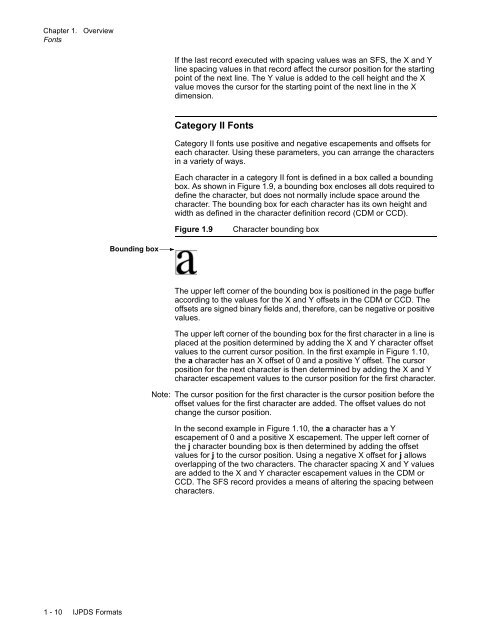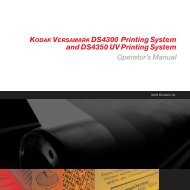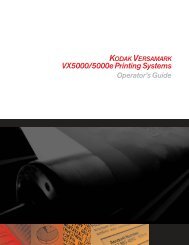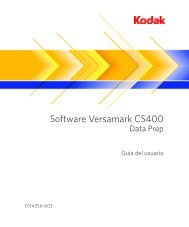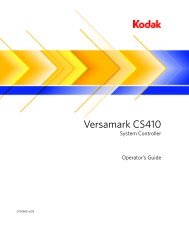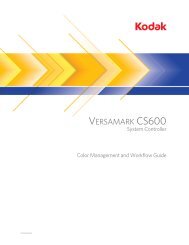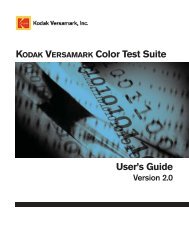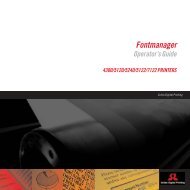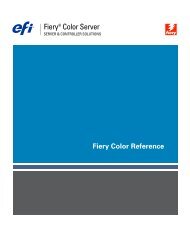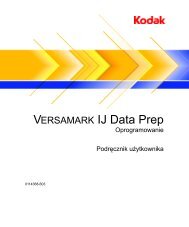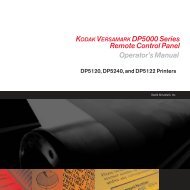You also want an ePaper? Increase the reach of your titles
YUMPU automatically turns print PDFs into web optimized ePapers that Google loves.
Chapter 1. Overview<br />
Fonts<br />
1 - 10 IJPDS Formats<br />
Bounding box<br />
If the last record executed with spacing values was an SFS, the X and Y<br />
line spacing values in that record affect the cursor position for the starting<br />
point of the next line. The Y value is added to the cell height and the X<br />
value moves the cursor for the starting point of the next line in the X<br />
dimension.<br />
Category II Fonts<br />
Category II fonts use positive and negative escapements and offsets for<br />
each character. Using these parameters, you can arrange the characters<br />
in a variety of ways.<br />
Each character in a category II font is defined in a box called a bounding<br />
box. As shown in Figure 1.9, a bounding box encloses all dots required to<br />
define the character, but does not normally include space around the<br />
character. The bounding box for each character has its own height and<br />
width as defined in the character definition record (CDM or CCD).<br />
Figure 1.9 Character bounding box<br />
The upper left corner of the bounding box is positioned in the page buffer<br />
according to the values for the X and Y offsets in the CDM or CCD. The<br />
offsets are signed binary fields and, therefore, can be negative or positive<br />
values.<br />
The upper left corner of the bounding box for the first character in a line is<br />
placed at the position determined by adding the X and Y character offset<br />
values to the current cursor position. In the first example in Figure 1.10,<br />
the a character has an X offset of 0 and a positive Y offset. The cursor<br />
position for the next character is then determined by adding the X and Y<br />
character escapement values to the cursor position for the first character.<br />
Note: The cursor position for the first character is the cursor position before the<br />
offset values for the first character are added. The offset values do not<br />
change the cursor position.<br />
In the second example in Figure 1.10, the a character has a Y<br />
escapement of 0 and a positive X escapement. The upper left corner of<br />
the j character bounding box is then determined by adding the offset<br />
values for j to the cursor position. Using a negative X offset for j allows<br />
overlapping of the two characters. The character spacing X and Y values<br />
are added to the X and Y character escapement values in the CDM or<br />
CCD. The SFS record provides a means of altering the spacing between<br />
characters.


